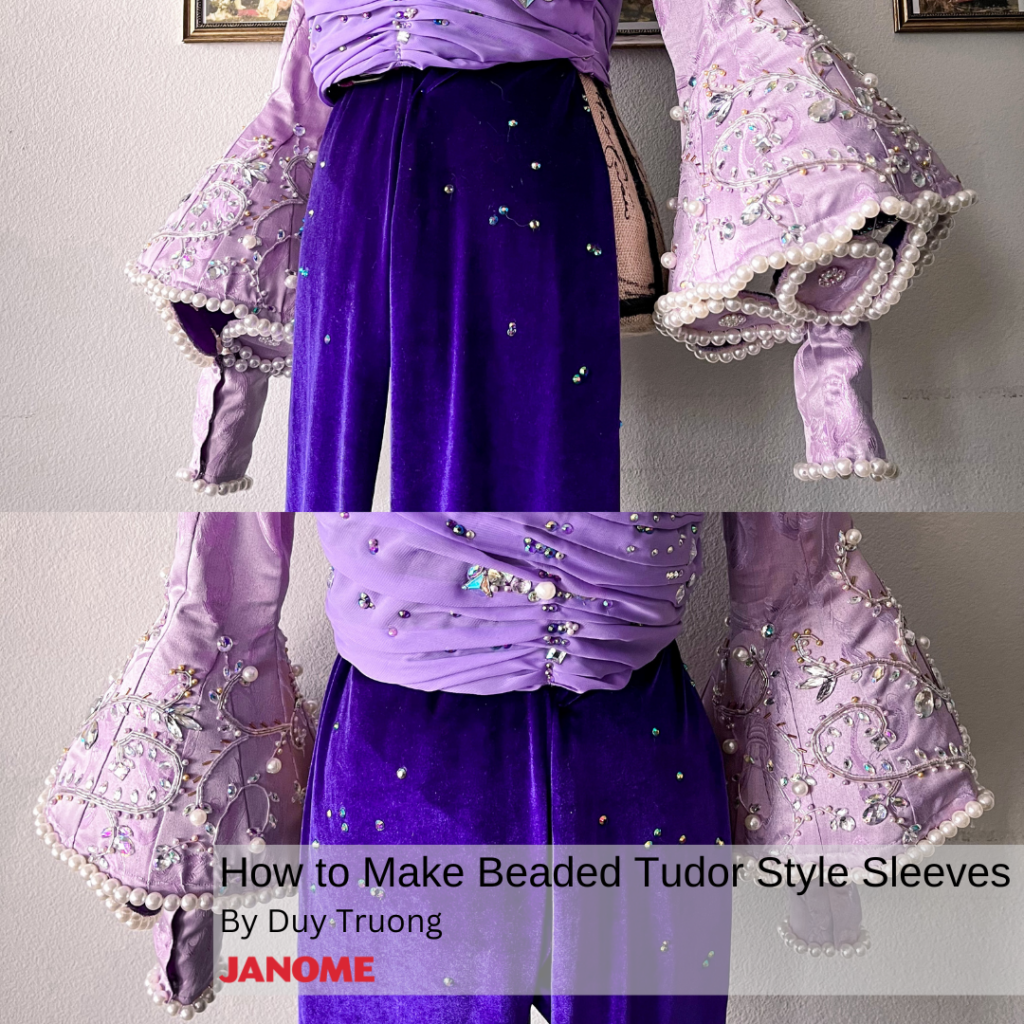Hello everyone, this is Duy back again with another portion of my Her Universe design. One of the notable parts of my Her Universe design this year was the sleeves. Today, we’re going to talk about how to approach your version of the sleeves. The sleeves were directly inspired by Jimmy Choo’s “Victorian Poetry” collection, but also inspired by the Tudor Era.
Heads up, majority of this project is hand stitching, but your Janome machine will handle all the parts that you don’t need to do by hand.
Janome Supplies Required
Instructions

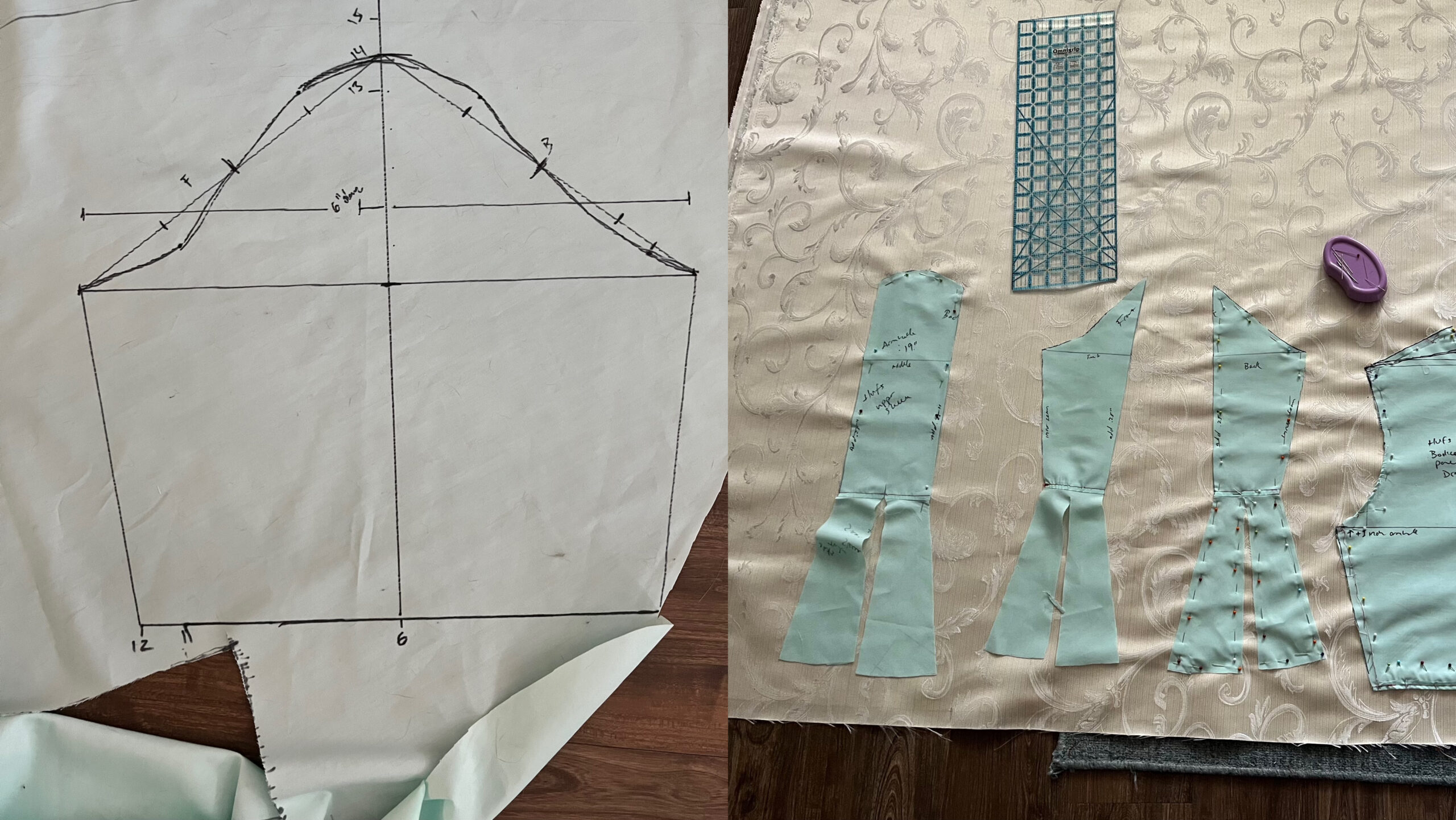

1. SLEEVE PATTERNING
The pattern for this was easy and hardest at the same time. The concept is clear as day in my head, but physically, it could be more complicated than it should be.
The general shape you want to aim for is a straight sleeve that ends around the elbow area and then an 80% circle at the end (imagine a circle skirt for your elbow).
The complicated part is whether you decide if you want a horizontal seam or not.
Make sure you save every part of your patterns, from the circle portion to the straight sleeve. It might come in handy for any of the process. This is also a good time to dye your panels as needed.

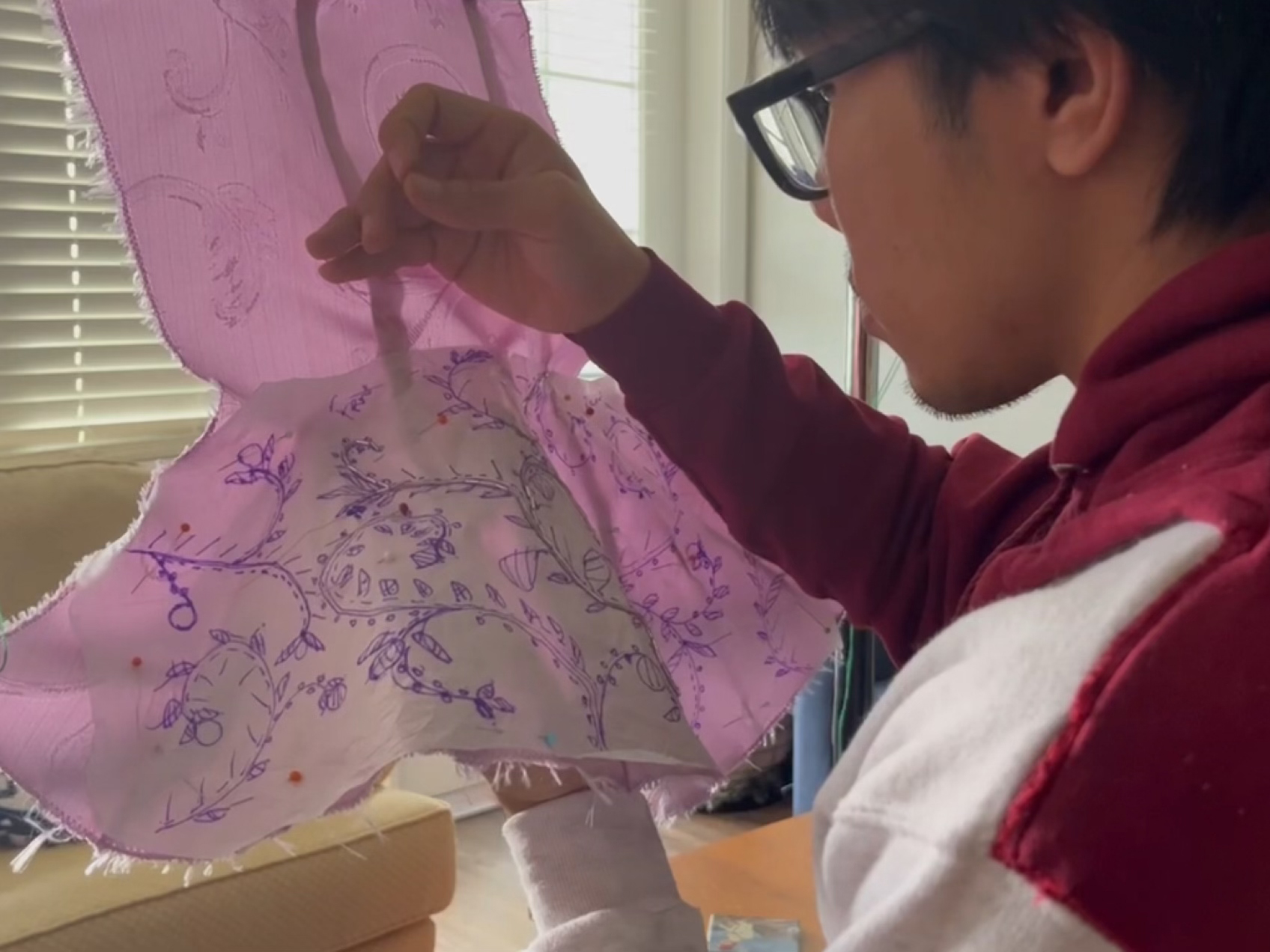
2. BEADING (part one)
Before you line your sleeve, we’re going to bead it. That way, all of the threads from the beading will be hidden. Draft out a beading design you want on your sleeve. If you choose to design on tissue paper like I did, make sure to use your pattern to have an accurate cut of the paper. My designs as inspired by Arabic gardens and artwork.
The beading is the longest portion of making the sleeves. If you feel like you’re not making any progress, you definitely are; beading just takes a long time.
Make sure you leave the edges free of any beads as you need to line the sleeves too.
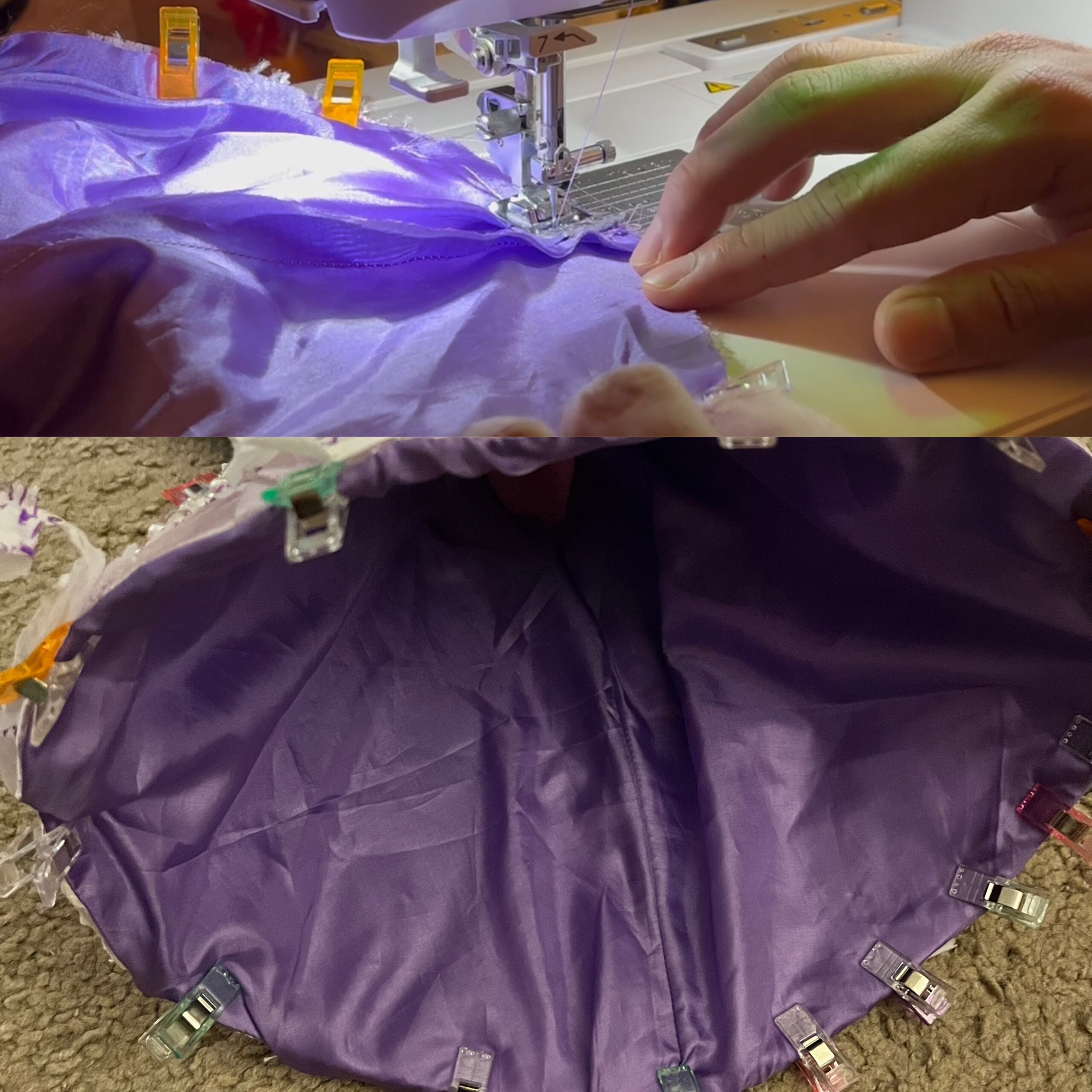
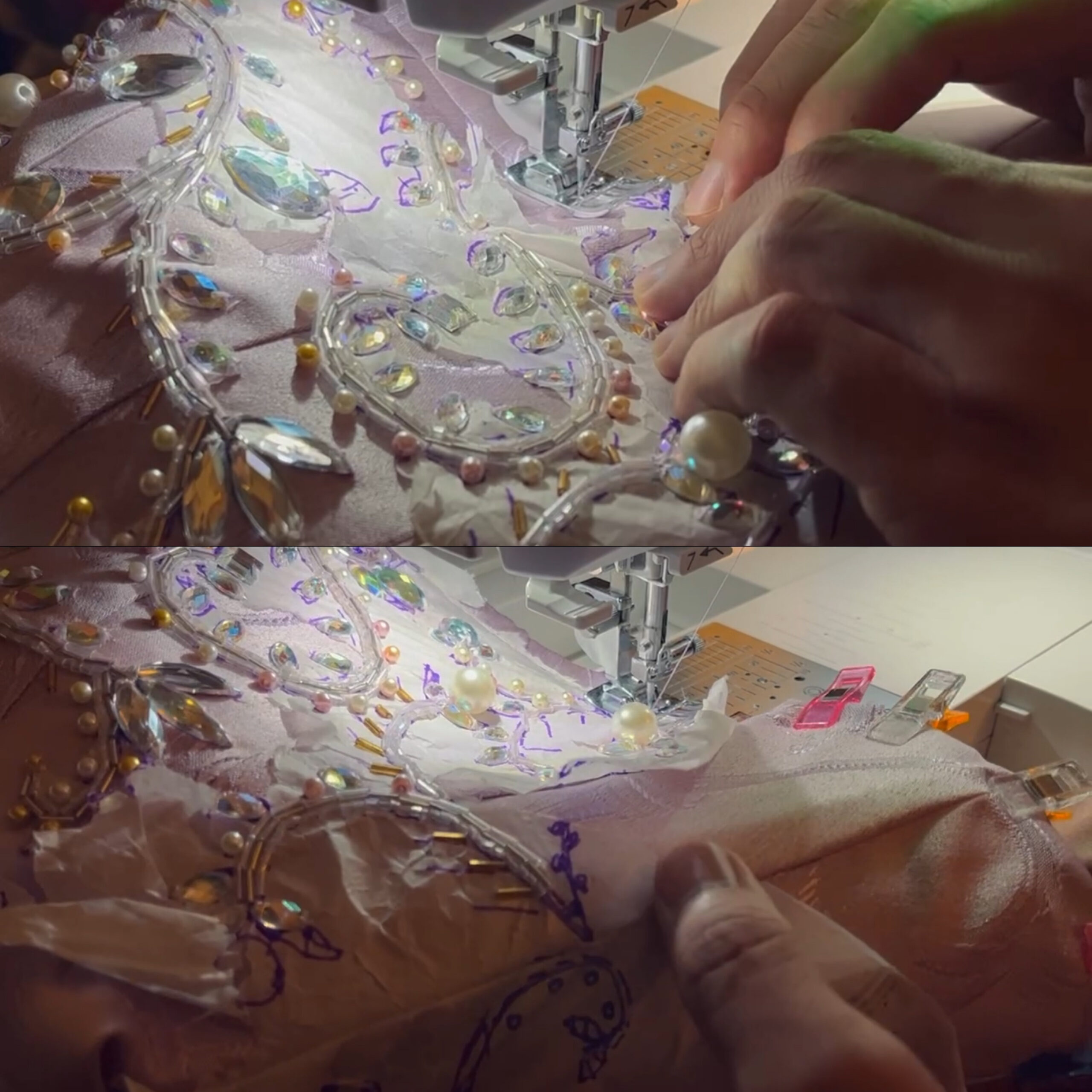
3. LINING & INTERFACE
For the lining, you want to be precise as much as possible for the sake of how the shapes line up. Seal the wrist end of the sleeve and leave the opposite end open. Insert your interface into the sleeve, between both fabrics. Your interface should be the exact same shape as the circle, possibly .25” lesser in size depending on your seam allowance. After the interface is inserted and properly position, top-stitch your hem and closing the lining via hand stitching.
For this part, you would want to use your Janome HD9 (Heavy Duty) because the interface with all of the layers are extremely thick, and the HD9 is designed to handle such thick layers.
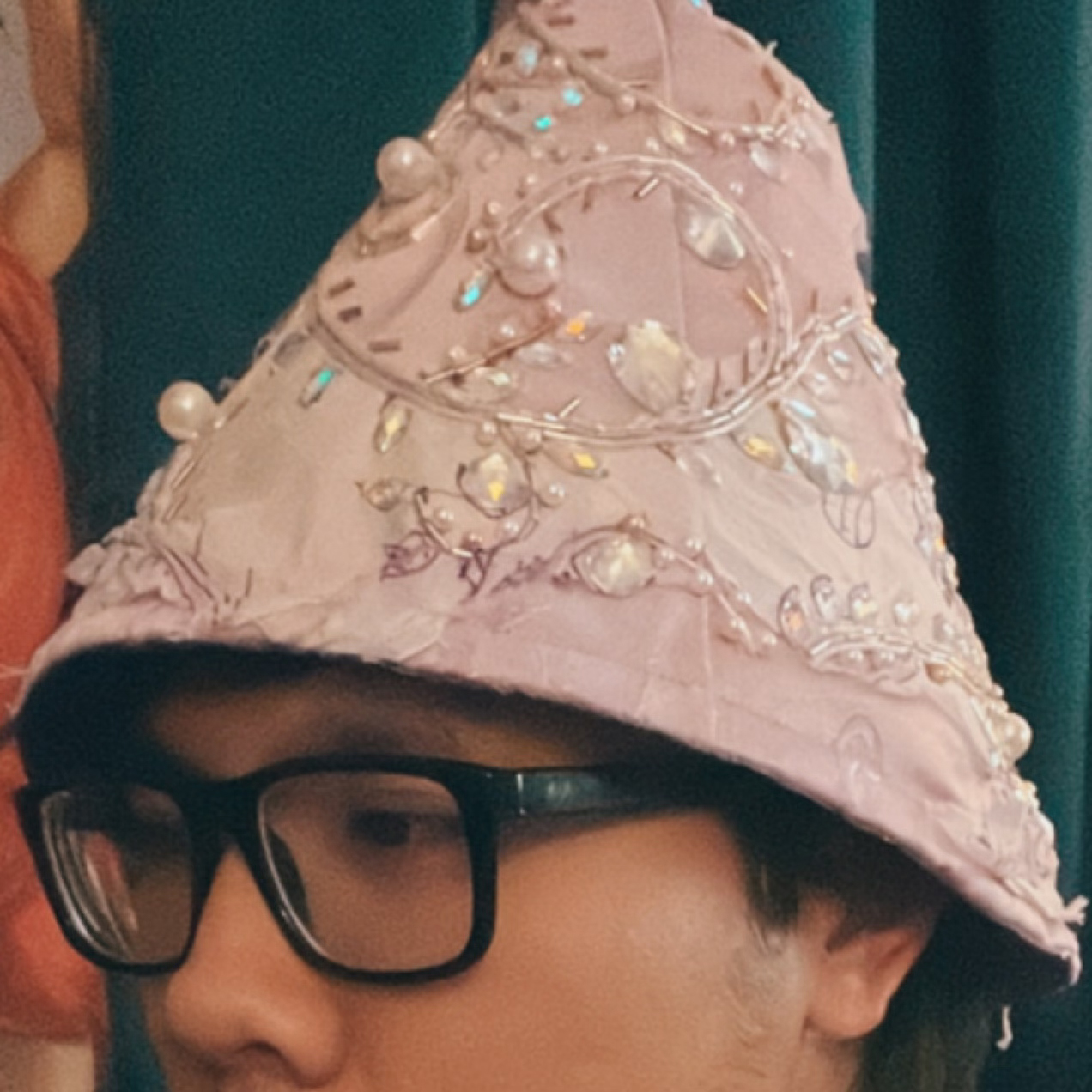
I also want to note that if you feel like nothing is going right and everything is taking a very long time, it’s because it absolutely is. It is perfectly okay to feel like you want to give up because it is taking forever. But please know that you are doing it absolutely correct, it’s just the hand beading, making sure everything fits, and geometry is just a lot of work.
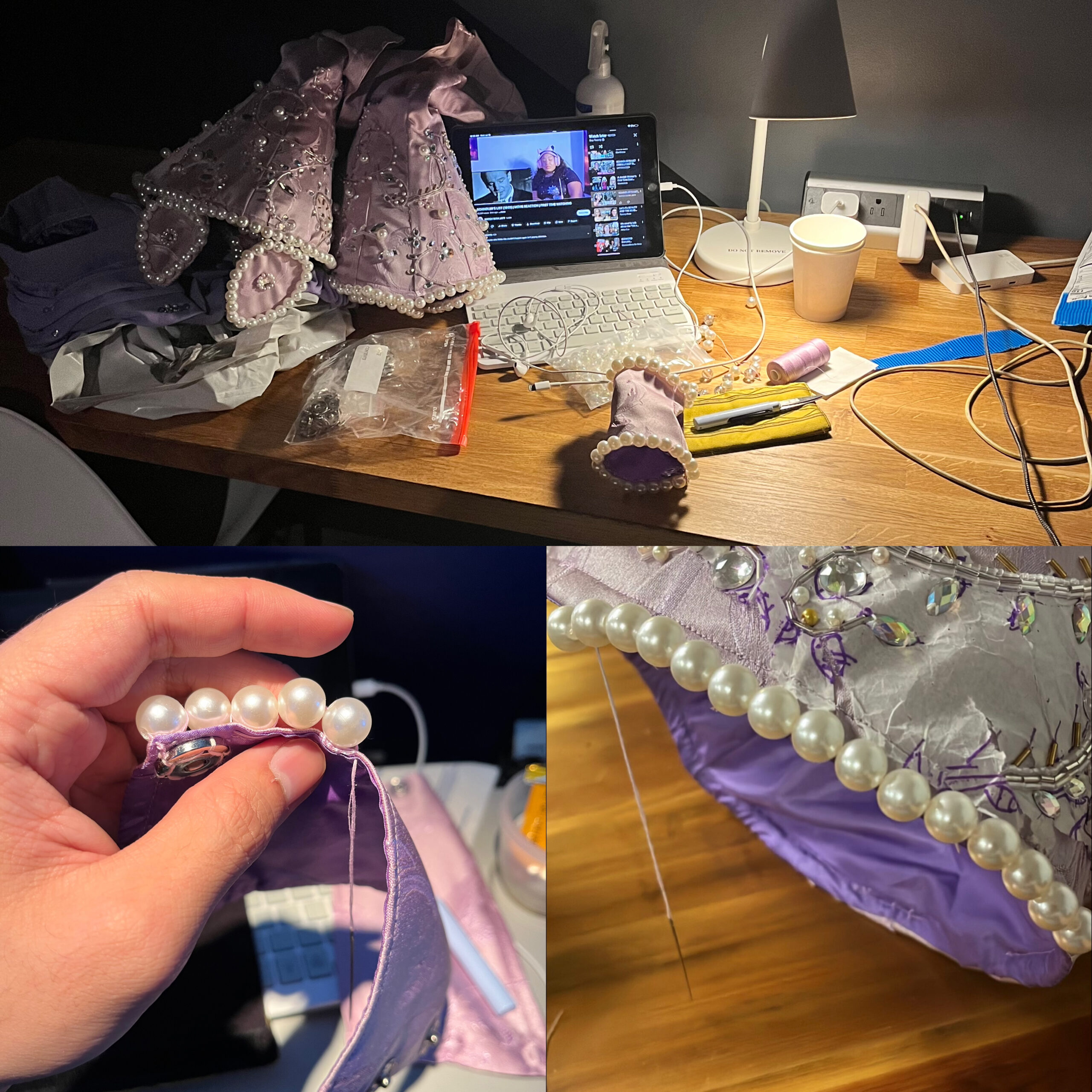
4. FINISHING EMBELLISHMENTS (beading part two)
For the little “petals” and cuffs of the sleeve ends, I combined interface and fabric so it would be consistent with the structure of my design, but you can choose to omit the structure or the entirety of the wrist area if you want. But what you want to finish is the beading. Finish your beading design around the seams of the sleeves. I also recommend beading around the edges so the top-stitching can be hidden as the top-stitch can be prominent with the interface.
After you finish your sleeves, sew them to your shirt body. Any Janome machine will be able to handle this part. And there you have it, sleeves to capture the attention of everyone in the room!


